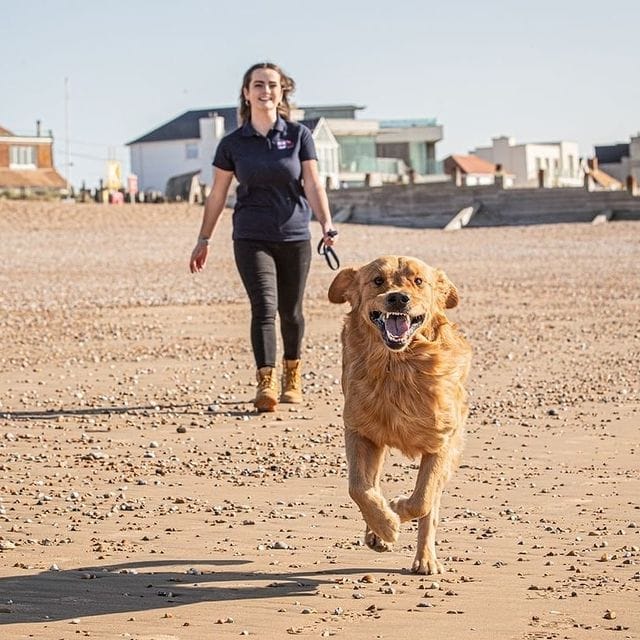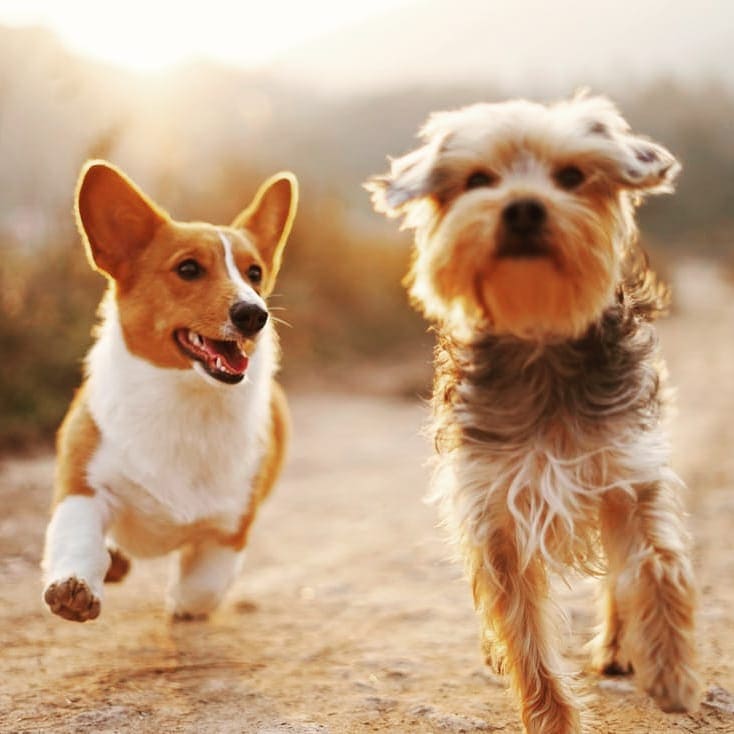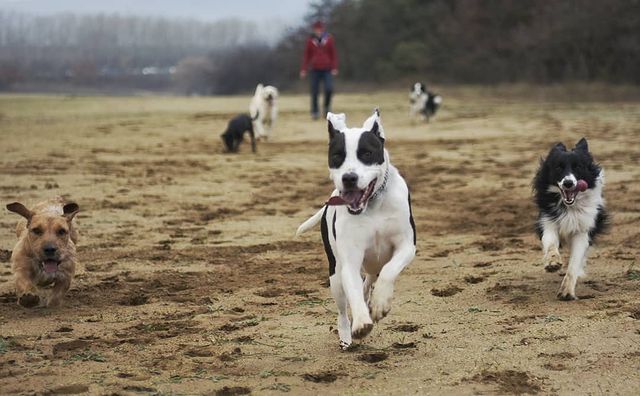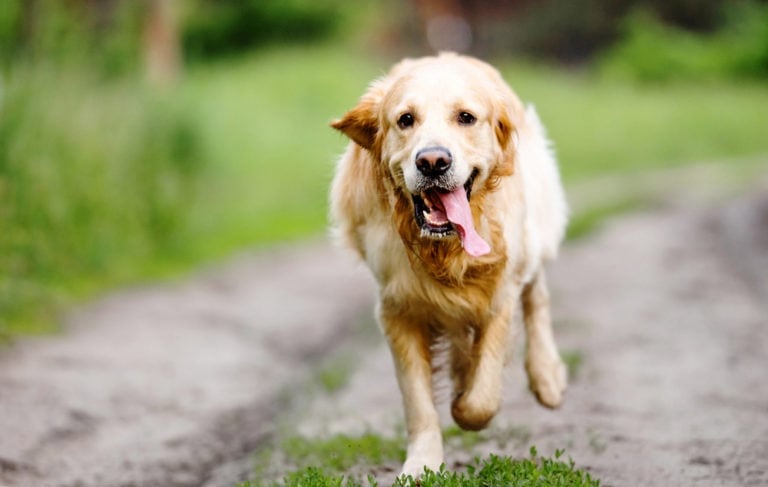Domesticated dogs have most of the things they need at home – food, love, toys, and shelter. And this is why most dog owners find it hard to understand why their canine buddies are constantly trying to run away.
So, why do dogs love running away? Dogs run away for various reasons, and some of these include boredom, fear, the innate desire to chase down small prey, the search for a mating partner, or simply because they just love to run and play around!
It can get worrying when your canine buddy suddenly runs off, but the good news is that dogs seldom run far from home, and on some occasions, your dear fido may return home on its own.
Regardless, you can’t just leave your dog to run off, and steps to take when your canine buddy escapes from home, as well as preventive measures to reduce running away by dogs, are all outlined in this article. However, before we go into all this, let’s first take a comprehensive look at why dogs love running away.
Why Do Dogs Run Away?

Dogs commonly run away due to boredom, to search for mating partners, due to high prey drive, fear, as a result of moving into a new environment, or simply because it is in the pooch’s nature to do so!
Boredom
Dogs are prone to developing a number of bad habits when they’re left alone for considerable periods, with nothing to do. And a dog that is left all alone in a yard with a relatively low fence and nothing to do may decide to give itself a walk around the neighborhood.
Boredom is one of the top reasons for dogs running away, and if you don’t find enough ways to entertain your canine buddy, you can best believe that the pooch will come up with several ways to keep itself busy – one of which includes running away.
For Mating Purposes
Dogs have ultra-powerful noses, and if a male dog smells a female pooch on heat, you can expect such a dog to put in a lot of effort to climb over the fence and go looking for the female dog with the scent.
That said, this behavior of running away to look for mating partners is particularly prominent among unneutered male dogs, but it isn’t uncommon for female dogs in heat to make attempts to escape and go in search of mating partners.
High Prey Drive
Dogs, such as Greyhounds and Siberian Huskies, with a high prey drive, will readily hop over a fence to chase after a retreating bunny or squirrel. And while this behavior is typically observed among prey-driven dogs, most other pooches can’t resist the temptation to chase after smaller animals.
Fear
For all their bravado, dogs can also get scared, and even the most well-behaved dogs will make attempts to run away from something that’s inducing fear.
Thunderstorms or firework displays are largely responsible for sending most dogs into a frenzy, and dogs have been known to burst through windows or leap over fences in a bid to get away from the source of the noise.
Moving Into A New Environment
Dogs tend to become stressed when they move into a new, unfamiliar environment, and it isn’t uncommon for our canine buddies to repeatedly make attempts to run away from unfamiliar surroundings. In addition, the lure of the new environment, smells, and sights may be too much for a pooch to resist, and such a dog may run away just to explore its new surroundings.
Your Dog Just Loves Running Away
It is in some dogs’ nature to run away and become natural escape artists. Your dear Fido may be running away simply because it just wants to play and explore, and it is ingrained in its genetics to do so.
Some dog breeds that are more likely to run away than others include the Border Collie, Labrador Retrievers, Boxers, German Shepherds, Chihuahuas, and Cocker Spaniels, just to mention a few.
And if your house is surrounded by a low fence, then you can expect these pooches to run away at each and every opportunity they get unless they’re well trained not to do so.
What Should I Do When My Dog Runs Away?

If you notice that your pooch has run away, it is advisable that you stay calm and start searching for the pooch, search smart by looking in areas that you frequently visit with your canine buddy, as well as inform friends and family to join in the search for your dog.
Start Searching For The Dog
The first thing to do when you notice that your dog has run away is to make immediate arrangements to search for and bring the dog back home. Panic won’t do you good in situations like this; hence it is important that you maintain a clear head while making arrangements to search for and bring your canine buddy back home.
Search Smart
If it is your dog’s first time running away, the chances are that the dog hasn’t wandered far, and the pooch can often be found sniffing a plant in the neighbor’s yard or your immediate environment.
Similarly, if there’s a nearby dog park that you frequently take your canine buddy to, or another pooch that your dog loves playing with, you can extend the search towards that direction.
Inform People That Your Dog Is Missing
By informing friends and family that your canine buddy has run off, you can get more people to help look for the missing pooch and cover a significant area when searching for the doggy.
Also, by posting your missing pooch on social media, you can get a lot of engagements and find your canine buddy faster. And as an alternative, you can put up signs containing pictures of your missing dog, as well as your contact details, so people can easily reach you if they spot the missing fido.
Catch And Stop Your Dog In The Act
If you’re fortunate enough to catch your pooch in the act of running away, instinct dictates that you chase after such a dog; However, no matter how difficult it may prove to be, you should refrain from chasing after your pooch if it is running away from you.
For one, by chasing after a retreating pooch, the dog may think you’re trying to play with it and run even further away from you. Similarly, by chasing after a dog that is running away, you may just end up instilling fear in the pooch, thereby encouraging the pooch to further distance itself from you.
What you should do instead, when you catch your canine buddy running away, is to employ one of the recall commands that you must have taught to the pooch to call it back.
Alternatively, you can turn the game of chase around, and instead of pursuing the fido, run away from the pooch, preferably with a toy or treat, in a bid to convince the doggy to chase after you.
How Can I Stop My Dog From Running Away?
You can curb your dog’s desire to run away by providing regular exercise, training the dog to come back when called, finding ways to relieve your pooch’s stress, providing toys and games to keep the pooch entertained, and neutering or spaying the dog.
Regular Exercise
By taking time to engage your pooch in physical exercises and also taking the pooch on walks around the neighborhood, you can provide sufficient mental stimulation and decrease the pooch’s desire to run away.
Also, when taking your dog on walks, it is important that you do so with a well-fitted collar and leash in case you come across stress triggers that may cause your dog to want to run away.
Keep Your Dog Entertained
As mentioned earlier, dogs run away because they’re bored and have nothing else to do; Hence, to prevent this from happening, you should make sure to provide your canine buddy with sufficient sources of entertainment.
This entertainment can be in the form of chew toys, puzzle toys, games, and playtime with other pooches. You can also, occasionally, take your canine buddy on trips to the dog pack to facilitate proper doggy socialization and also provide your fido with sufficient mental stimulation, thereby reducing such a pooch’s urge to run away.
Training
Training is another effective way of curbing the act of running away by a dog, and by teaching simple recall commands to your canine buddy, you can, most times, stop the dog in its tracks.
You can teach your pooch to come back when called by following the simple steps outlined below:
- Deciding on a verbal cue to use for your pooch – common examples of verbal cues include words such as ‘come’ or ‘here.’
- Once you’ve decided on a verbal recall cue, the next step is to choose a low-distraction environment to train the pooch.
- Show your dog a treat or toy, and as the pooch approaches you to retrieve the treat or toy, shower it with praise. Repeat this procedure several times.
- Once your dog starts looking and moving towards you in a bid to retrieve the toy or treat, you should add in the chosen verbal cue.
- You can try to call your dog using the chosen verbal cue before showing the pooch a treat or toy.
- Repeat the steps listed above, but add more distance between you and your pooch each time.
If your pooch is a runner, you can train it to come back when called by:
- Putting a collar and leash around the dog.
- Bend to reach the dog’s level, and gently pull on the pooch’s leash while repeating your chosen verbal cue.
- Reward the dog with a treat and belly rubs when it gets to you after being called.
For a more detailed guide on how to teach an effective recall to your pooch, you can refer to this article by the American Kennel Club.
That said, teaching an effective recall to your pooch will typically take weeks to perfect. Hence it is important that you display a lot of patience and determination during this period. Additionally, to make the process of training a lot easier, it is recommended that you begin with recall training for your pooch from when it is a puppy

Find Ways To Relieve Your Dog’s Stress
By helping a fearful dog feel safe and comfortable, you can reduce such a dog’s desire to run away when loud noises are being made.
Calming treats, speaking gently to the pooch in stressful situations, and making use of anxiety relief wearables like Thundershirt or calming collars, are all proven methods of dropping stress levels in dogs, and you can readily employ one of these for your canine buddy.
You can also create a safe space within your home for a dog to retreat to during stress-inducing situations such as thunderstorms and fireworks displays; This safe space can be a crate or a room with a door.
Additionally, you should ensure that your dog is indoors during thunderstorms and fireworks displays and that the doors and windows are securely locked.
Secure Your Environment
While it may be true that your dog loves running away, you will be making it easier for the pooch to take to its heels by housing it in an environment with an easily scalable fence.
If your house has a relatively low fence, it can help to construct higher fences. Additionally, if your pooch is out playing in the yard, ensure to always close the fence gate to prevent your pooch from running away, and occasionally check your fence for holes and weak spots.
Neutering And Spraying
You can greatly reduce or even manage to completely eliminate a dog’s desire to run away in search of mating partners by either neutering or spaying the dog in question.
Neutering and spaying involve the respective surgical removal of male and female dogs’ reproductive organs, and studies have shown that this procedure has decreased sexual roaming in about 90% of dogs, thereby reducing a pooch’s urge to run off in search of mating partners.
Now, there are contrasting opinions about when it is suitable to neuter or spay a dog, but most vets and animal experts typically agree that, for male dogs, neutering should be done after the pooch clocks six months of age, while female dogs can be spayed between 4 to 6 months of age.





